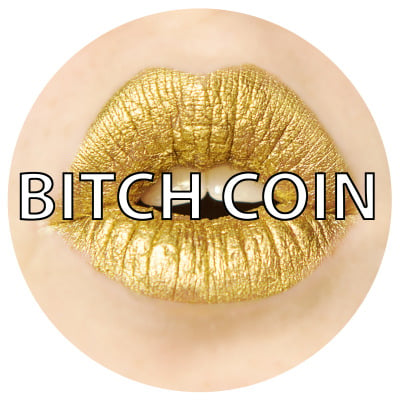
We’re used to the complex ins and outs of viewing art as an investment (see What Is Behind the Art Investment Boom?), but what happens when we begin to view actual artists (not just their physical work) as such? This is the question recent Yale MFA graduate Sarah Meyohas is seeking to explore with BitchCoin, a cryptocurrency that entitles investors to her art. Not pieces of it, necessarily, but inches. One BitchCoin, sold for $100, is worth 25-square-inches of any one of Meyohas’s photographic prints, including those that have not yet been produced.
Wired reports that when you purchase one BitchCoin, you receive a certificate with an encrypted number, which can be redeemed at any time for a physical artwork. Purchasing a complete print requires 25 BitchCoins, which comes to $2,500, but any print can be exchanged in the future for another print.
In conjunction with Brooklyn’s Where gallery, which invested in BitchCoins in order to mount its current show of Meyohas’s work, the artist has sold more than 100 of the coins, though no one person has purchased enough to redeem for a print.
Like any market, the BitchCoin market will fluctuate over time, and the currency could come to be worth much more—or much less—depending on Meyohas’s future success as an artist, which is the point of the project. Meyohas told Wired she would eventually like to create an exchange or hold an auction to determine the future value of BitchCoin. If she comes to succeed on, say, a Jeff Koons or Damien Hirst level, those early investors will probably be pretty pleased about that $100 they shelled out.
While the project is clever both in name (“BitchCoin” seems like a term that was just aching to happen) and in ideology, it’s not exactly revolutionary. New media artist Brad Troemel (see Can Tumblr Sensation Brad Troemel Find Viral Success IRL?) has created artworks with physical Bitcoins in them that must then be purchased with dollars, calling into question the literal vs. figurative value of the piece. Collectors have also been known to invest millions in artwork, sight unseen, because they believe in the future value of the artist, which is exactly what Meyohas is asking people to do.
Still, she has a point. “Selling artwork has become this mechanized process,” Meyohas noted. “At its worst, artists are just stuff producers. This is kind of about artists reclaiming agency.”